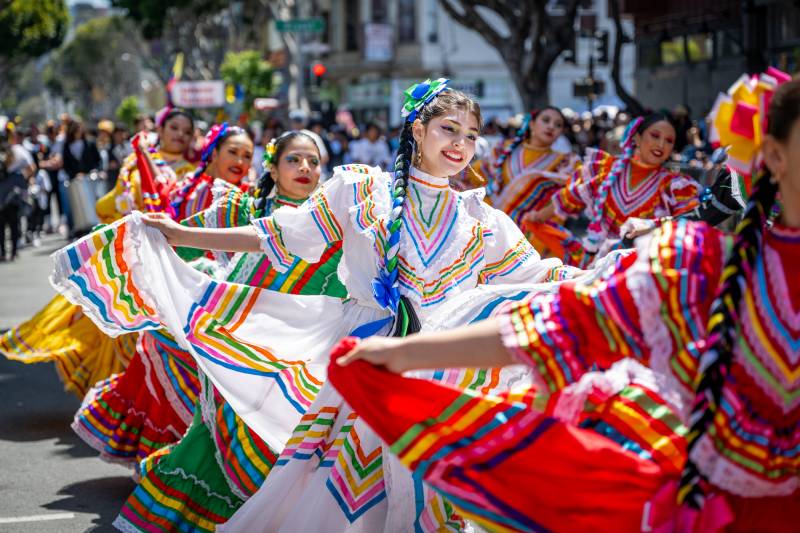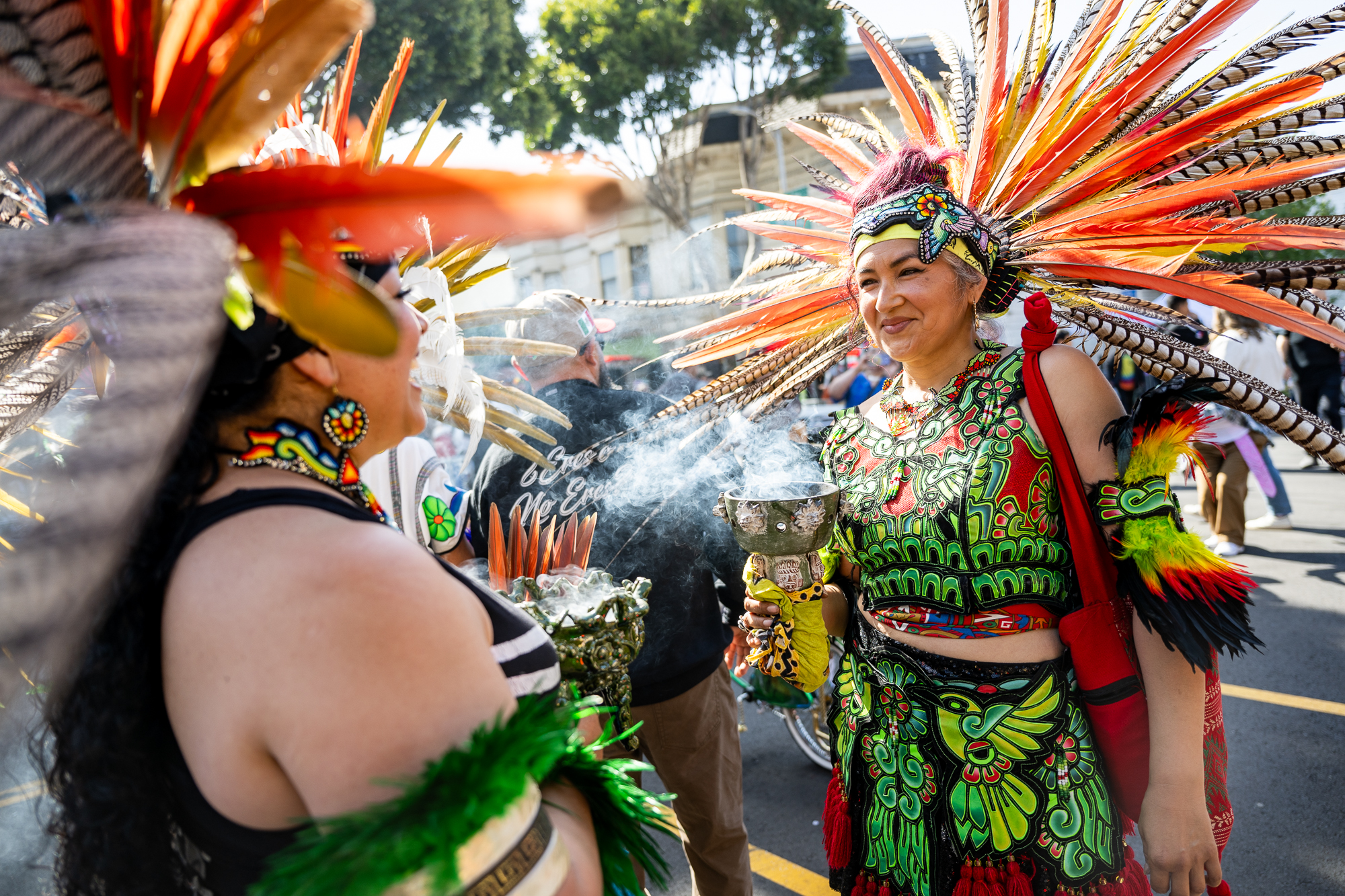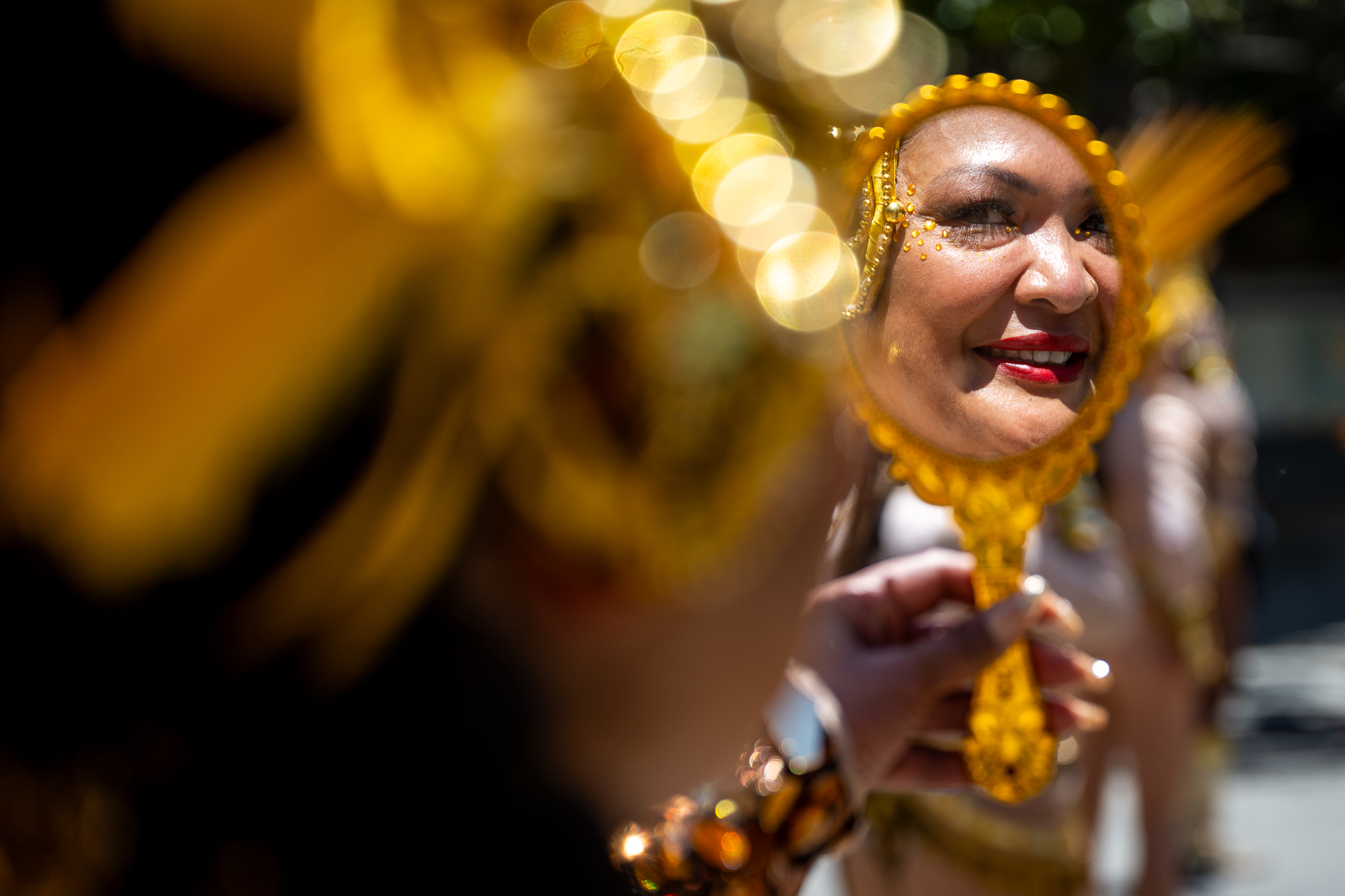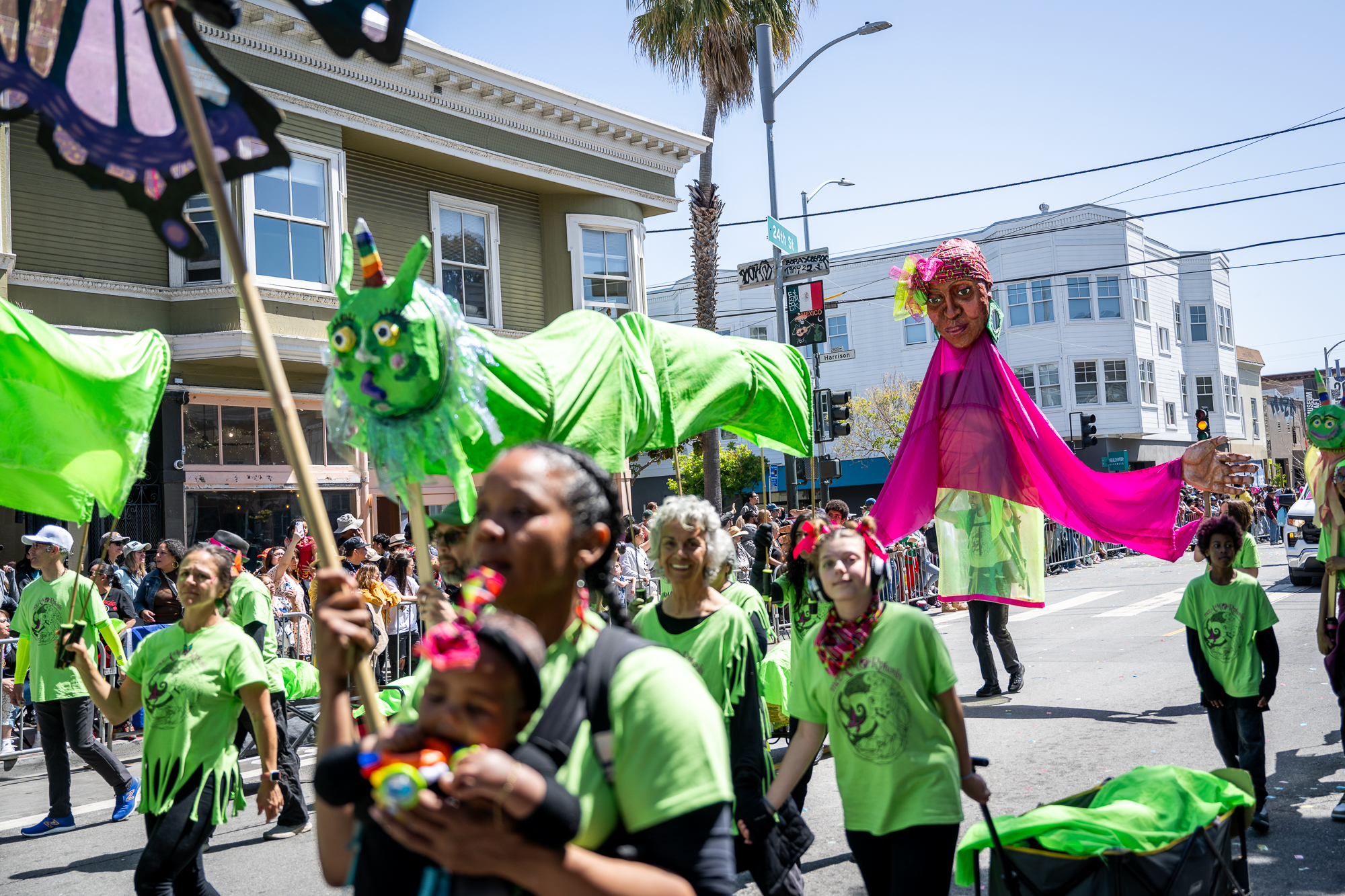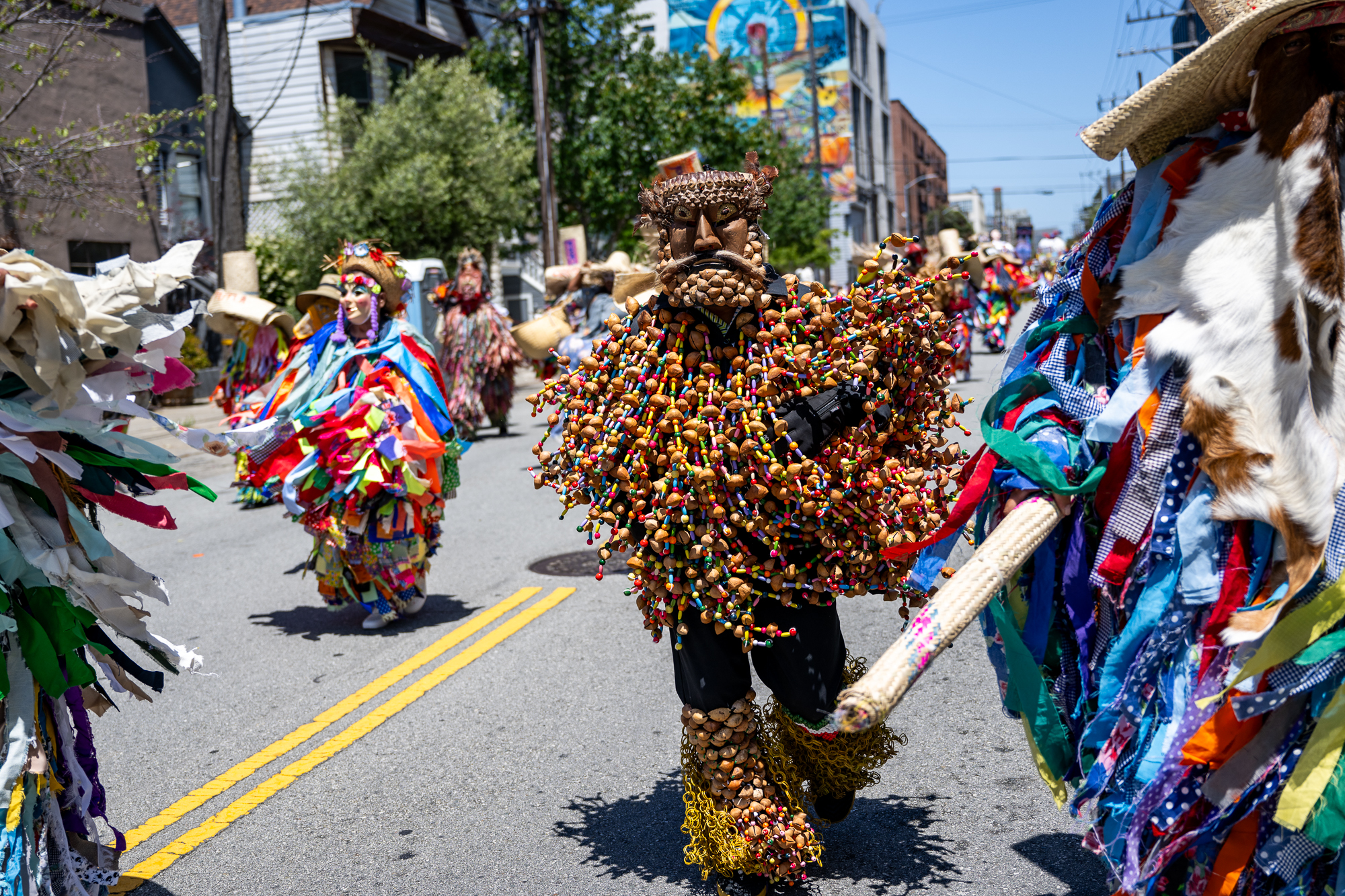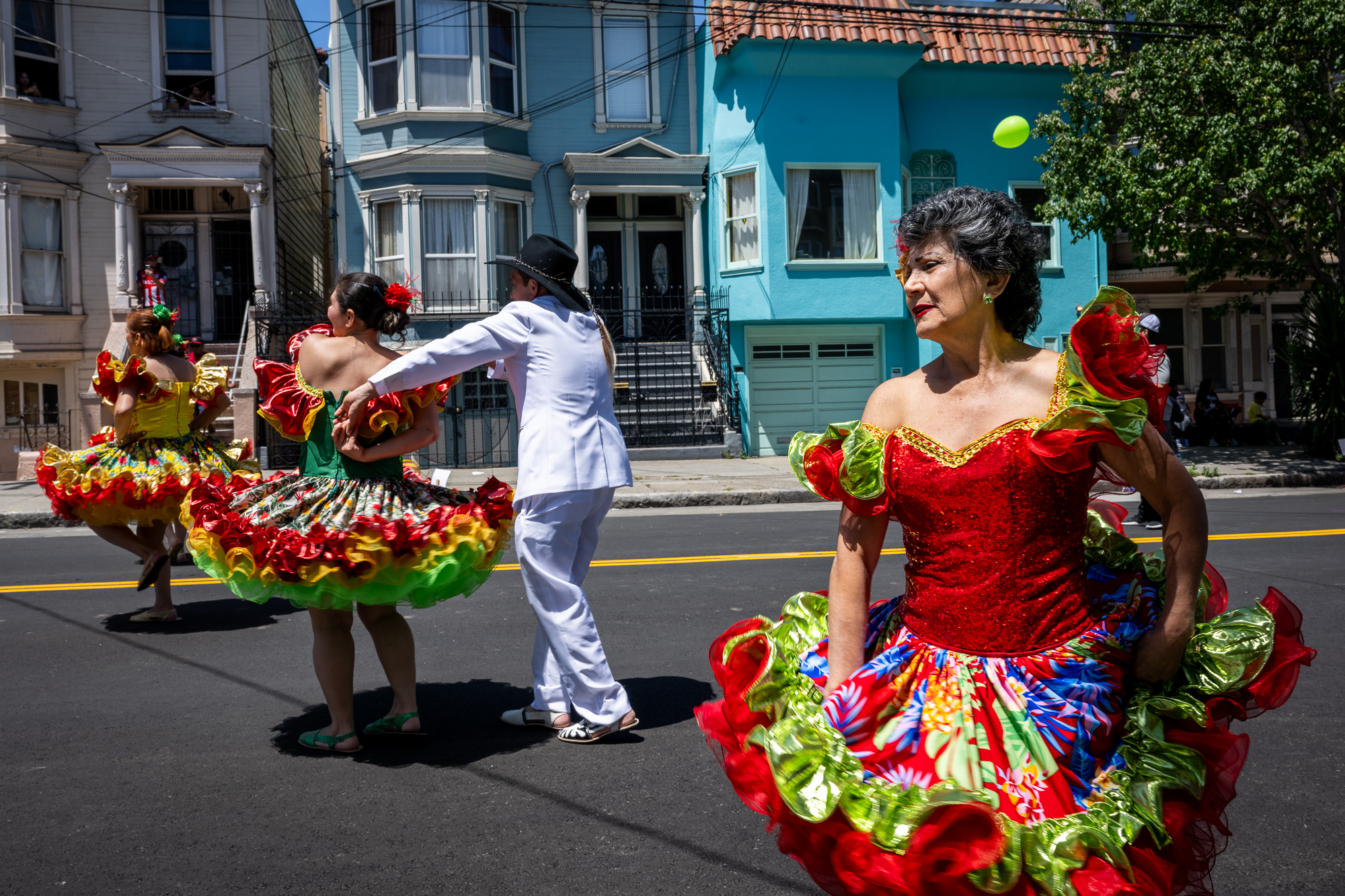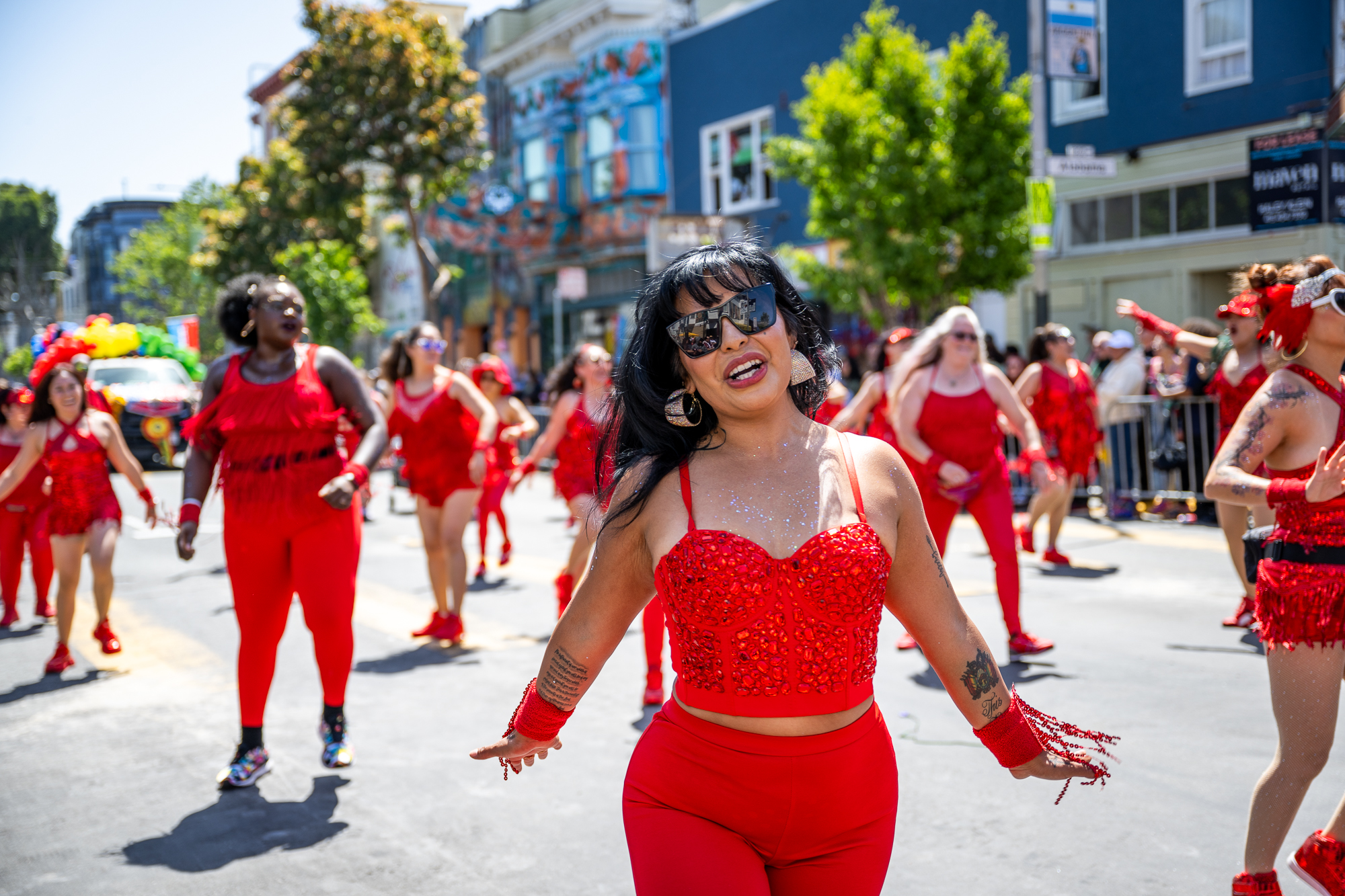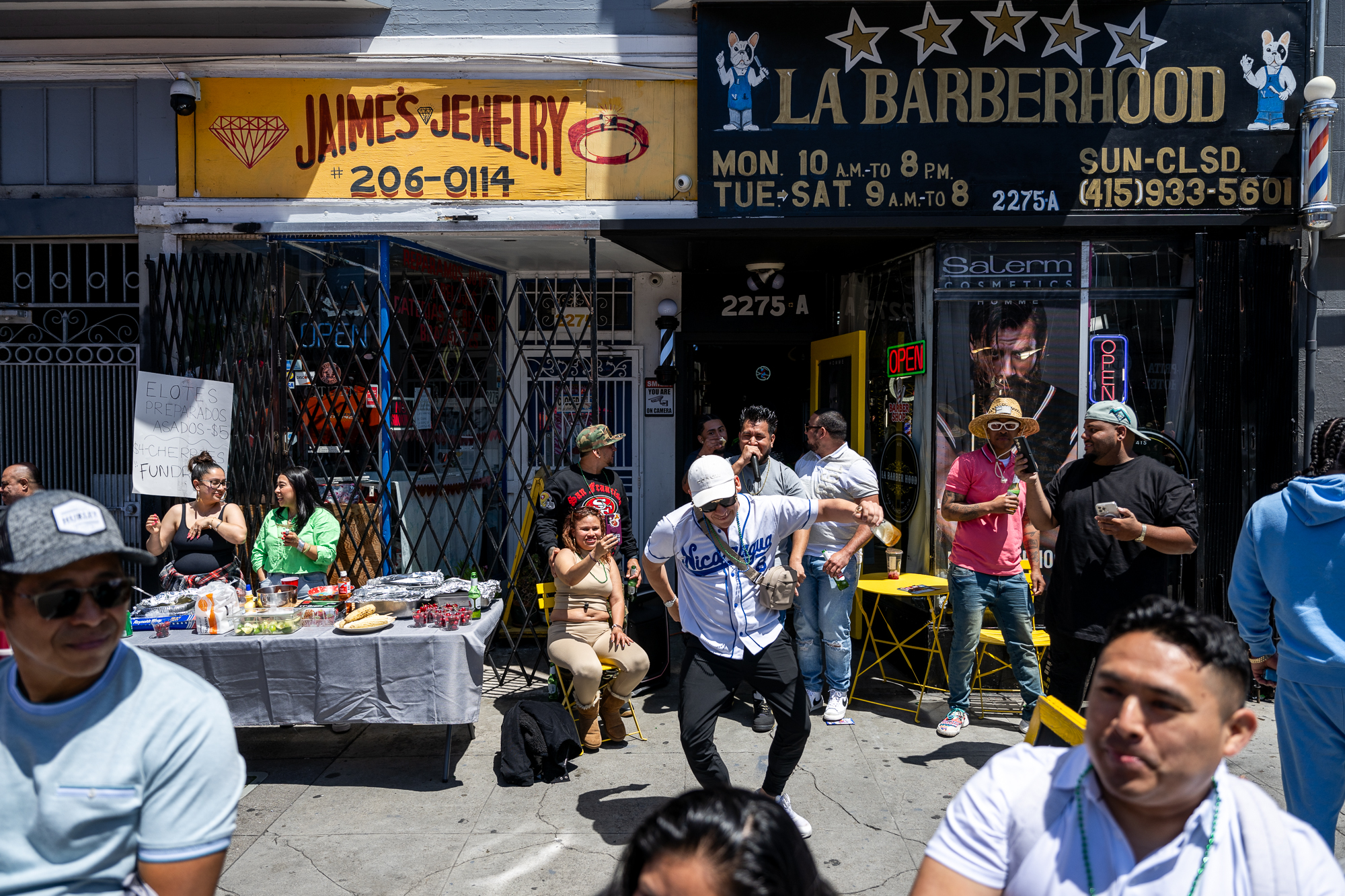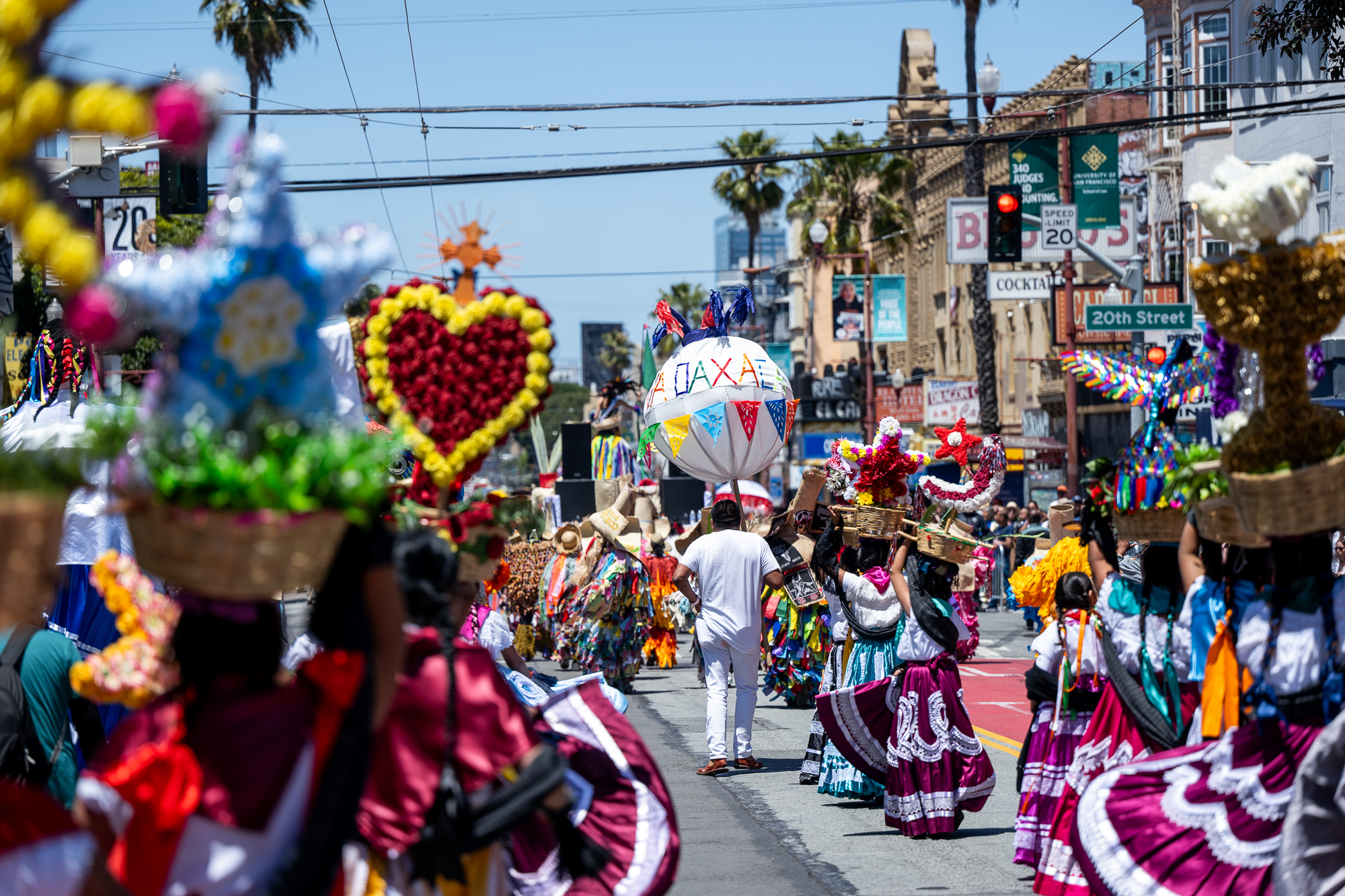On Sunday, San Francisco’s Mission Street resonated with a very specific sound: a blend of samba, cumbia, dancehall and reggaetón — a deep pulsing rhythm only heard when it’s Carnaval San Francisco.
The community celebration — now in its 46th year — brought together thousands of musicians and dancers from all over California as part of its Grand Parade, which moved through 20 blocks in the Mission District. Over 60 contingents participated this year, each representing a different culture from Latin America and the Caribbean.
KQED’s Beth LaBerge was there to capture the festivities. See some of the most colorful and lively moments from the parade.
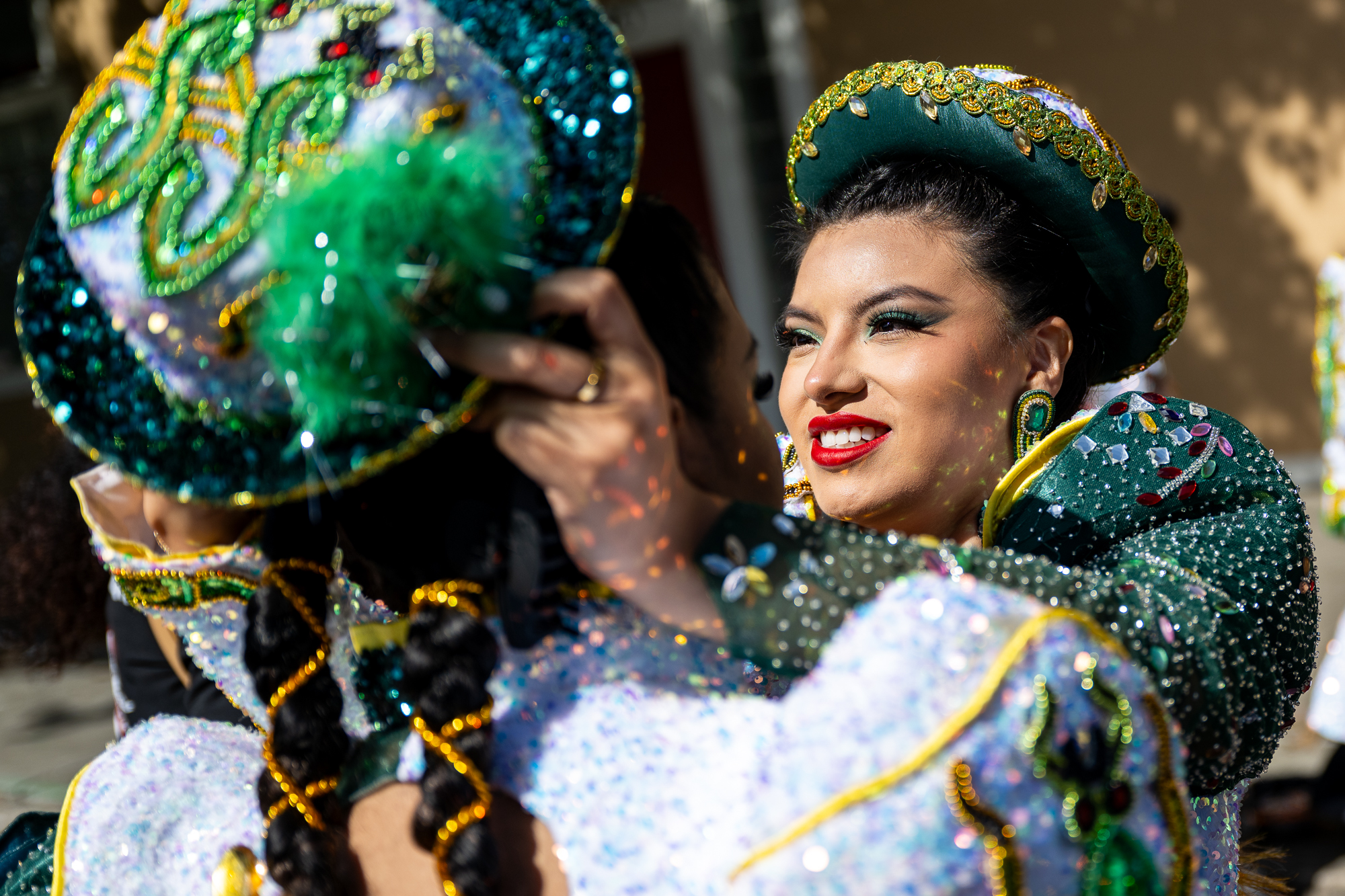
The crowds filled the sidewalks of the Mission by the thousands, cheering for every performance. After all, each contingent made it to Carnaval this year after thousands of hours of dance practice, costume preparation and float design. The result of all that effort is apparent: the perfect coordination between percussion and choreography of Loco Bloco, the elaborate details on each tiliche suit of Carnaval Putleco, the sea of colorful feathers in the costumes of Flavaz of D’ Caribbean.
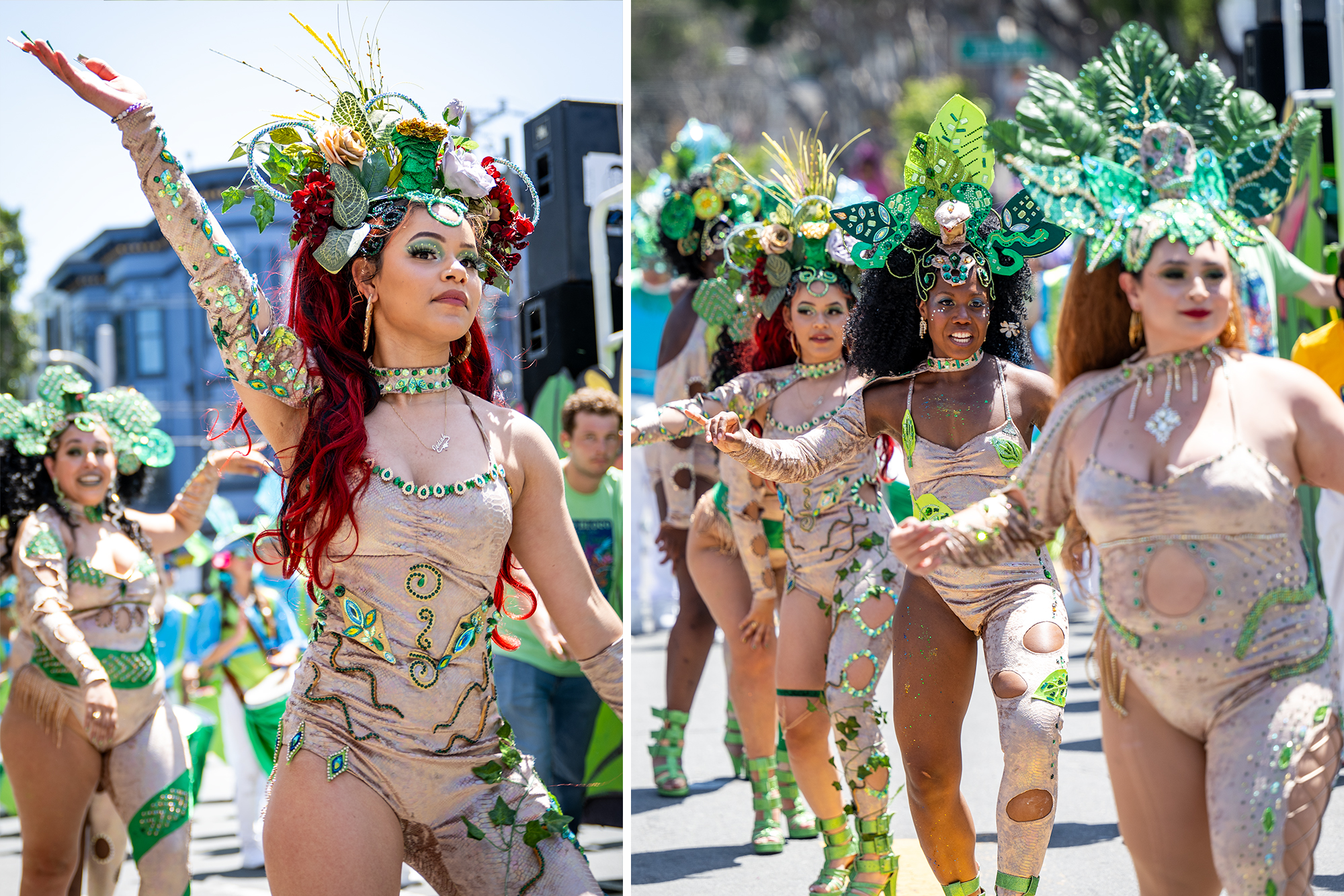
And, of course, the warmth exuded from this year’s Carnaval King and Queen: Yeison Andrés Jiménez and Mónica Mendoza, who did not stop dancing for any of the 20 blocks that made up the parade route.
